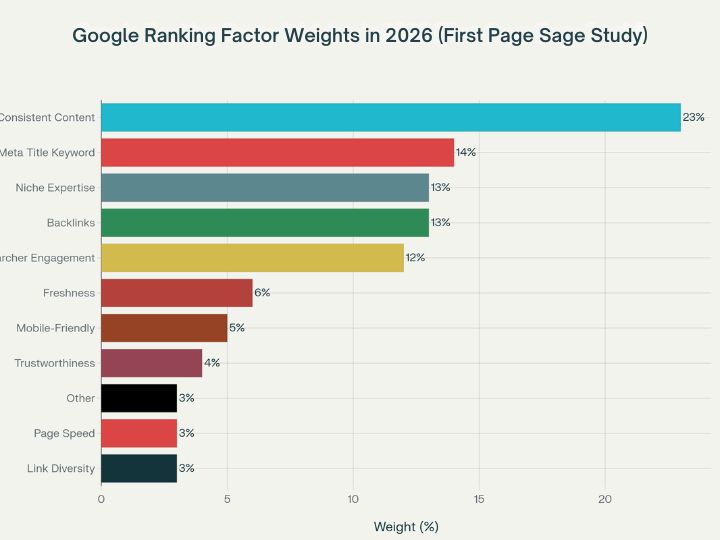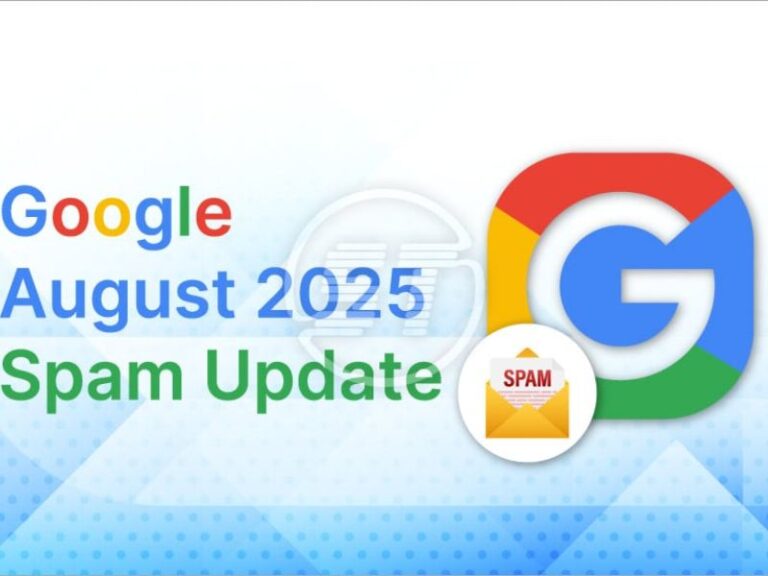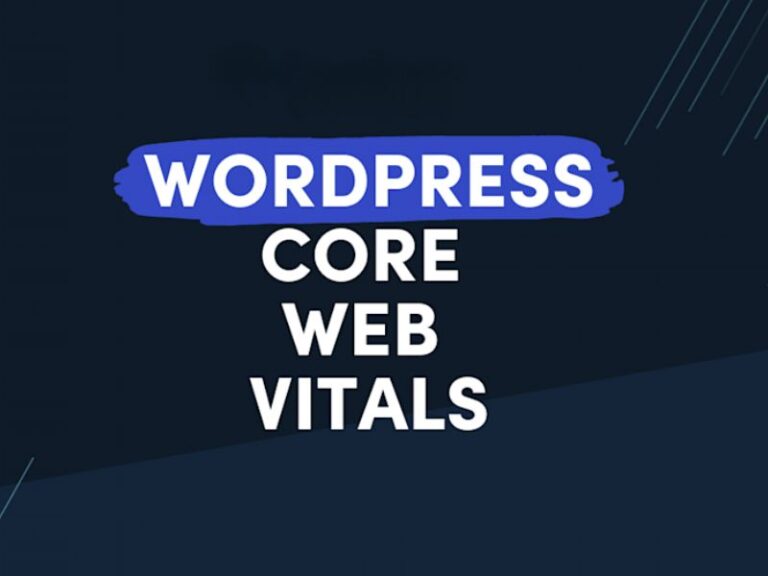Backlinks remain one of Google’s core signals, but their relative weight is moderating as algorithm expands its focus on content quality, user engagement, and topical authority. Below is a deep-dive into why links still matter—just not in isolation—plus how to future-proof your strategy for 2026 and beyond.
The State of Ranking Signals

Key Takeaways
-
First Page Sage’s 2025 data shows backlinks carry 13% weight—tied with niche expertise and trailing consistent high-quality content (23%) and keyword-optimised title tags (14%) .
-
Google’s public documentation lists PageRank as “one of our core ranking systems,” confirming links are still baked into modern search.
-
Multiple studies confirm quality, relevance, and diversity of referring domains now matter far more than raw link count .
How Google Evaluates Backlinks in 2026
1. PageRank Revamped
Google retired public toolbar scores in 2016, but internal PageRank calculations persist. Modern PageRank weighs:
-
Relevance of the linking page’s topical cluster.
-
Authority (traffic, real engagement) of the referring domain.
-
Natural anchor-text distribution to curb manipulation .
2. Link Quality > Quantity
AI-powered spam filters can devalue low-quality guest posts, link farms, and paid insertions. Google’s 2025 March update penalised sites with inorganic velocity spikes .
3. Diversity & Context Signals
Leaked API docs highlighted “Link Distribution Diversity” as a 3% factor—rewarding varied sources over a handful of mega-domains . Editorial in-content links outperform footer/sidebar or author-bio links .
4. E-E-A-T & Brand Authority
Links from domains demonstrating Experience-Expertise-Authoritativeness-Trustworthiness pass stronger equity. Digital-PR placements on high-trust media sites now deliver both ranking lift and brand signals .
Comparative Importance of Core Factors (2025-2026)
| Factor | Relative Weight | Trend 2024→2026 | Notes |
|---|---|---|---|
| Content depth & consistency | 23% | ▲ Growing | Google’s Helpful-Content system rewards satisfying, expert coverage. |
| Keyword in meta title | 14% | ▼ Slight decline | Still critical but cannibalised by AI-generated result layouts. |
| Backlinks (quality) | 13% | ▬ Stable | Remain a core off-page validator, but must be contextual. |
| Niche topical expertise | 13% | ▲ Rising | Clusters & content hubs drive passive links and authority. |
| User engagement metrics | 12% | ▲ Rising | Navboost click data tracks 13-month behaviour . |
| Technical UX (CWV, mobile) | 8% (aggregate) | ▬ Plateau | Table-stakes; only a differentiator when poor. |
Link Building Strategies That Work in 2026
Digital PR & Data Studies
Original research, interactive tools, and news-worthy insights secure coverage on authoritative media—earning evergreen, high-trust links .
Podcast Guesting & Video Collabs
Audio transcripts and YouTube descriptions provide do-follow links; rising consumption of voice/video content offers untapped link equity .
Resource & “Best-of” Hubs
Comprehensive content hubs naturally attract citations and support topical authority, indirectly fueling link acquisition .
AI-Assisted Outreach with Human QA
LLM tools speed prospecting, but personalised pitches and manual quality checks avoid spam flags .
Programmatic SEO Pages
At scale, dynamically generated city/service pages can garner local citations—provided they deliver real value and unique content .
Tactics to Retire
-
Mass guest-post swaps on low-traffic blogs.
-
Paid link insertions without editorial value or traffic.
-
Exact-match anchor stuffing—risks partial-match manual actions .
-
Automated directory blasts—ignored or de-indexed.
Measurement & KPIs
| KPI | Why It Matters in 2026 | Benchmarks |
|---|---|---|
| Referring-domain diversity | Signals organic link profile . | Aim for <10% links from any single domain. |
| Link-acquired traffic | Indicates genuine user value . | Target ≥5% of sessions from referral links. |
| Authority score (e.g., Moz DA, Ahrefs DR) | Proxy for PageRank flow. | Focus on incremental growth vs. peers. |
| Toxic-score ratio | Helps avoid spam-trigger penalties. | Keep toxic links <3% of profile. |
| Engagement on landing pages | Links that drive engaged visits boost Navboost signals . | Bounce rate <60%, dwell time >1:30. |
Future Outlook: 2026 and Beyond
-
Generative AI in SERPs (SGE) reduces organic blue-link real estate; backlinks will partly influence inclusion in AI snapshots.
-
Topical authority graphs may eclipse raw link equity—sites need comprehensive, interlinked coverage of subject areas.
-
User-centric metrics (click satisfaction, scroll depth) likely to edge past backlinks in weight, but links will still underpin credibility signals.
Action Plan for 2026
-
Audit existing link profile for quality, relevance, and toxic patterns.
-
Map content gaps by clustering keywords into thematic silos; create linkable assets per silo.
-
Launch quarterly data-led PR campaigns to secure top-tier coverage.
-
Integrate podcast/video guesting to diversify link sources.
-
Track link-driven engagement metrics, not just counts, to align with Navboost signals.
Backlinks are no longer the single king-maker they once were, yet they remain a foundational pillar—especially when paired with authoritative content and strong user experience. Treat them as credibility accelerators within a holistic SEO framework, and they will continue to pay dividends in 2026.



